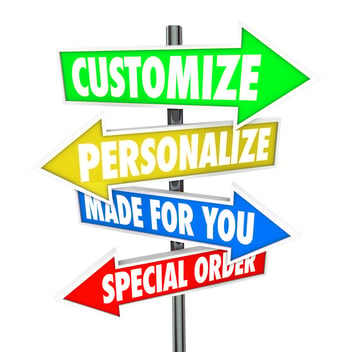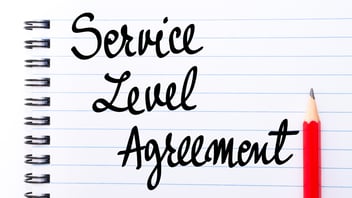Make Content Decisions A Joint Effort: Marketing & Sales Together

Working closely with colleagues in other departments—most notably creating a smooth relationship between marketing and sales—improves the effectiveness of your entire system. One of the keys to cooperative efforts is providing everyone with the information they need to do their jobs better.
That means marketing needs to share with sales information such as which inbound content offers are driving the most leads and sales.
Why does sales need this information? It is a first-touch indication of what prospects are looking for when they visit your website. When the sales team knows what leads are looking for, they can more effectively provide relevant information when they take over an account.
Find even more about bringing these two departments together in our ebook: The Complete Guide to Unifying Sales & Marketing.
How to Determine Which Inbound Offers Are Most Effective
With today’s closed loop marketing systems and integrated content management, lead management and CRM software such as that offered by JONES’ partner HubSpot, there is a wealth of information at the fingertips of most inbound marketers. Here are some of the metrics to review to pinpoint which of your offers are most effective in driving lead generation and sales.
Consider:
Visits per offer
Start with the first touches. How many website visits were there to each offer’s landing page?
Take it another step further and split those visits up according to channel - how did they reach your landing pages?
Knowing what offers and channels are bringing in the most website visitors is a clue toward finding out what your potential customers are looking for when they are online.
Conversion rate per offer
Visitors are a start, but leads are more important. Knowing which offers converted visitors into leads at the highest rates points toward true need, not just a landing page that may have matched the most search terms.
Are the offers with the most visits also producing the most leads? Or do other offers generate more leads because they have a higher conversion rate?
Closed sales that include each offer
By using closed loop marketing, which tracks each sale back through the customer’s interaction with your website, you can determine which offers are most likely to be a part of a successful sales funnel. By calculating the percentage of customers who visited a specific page on your site prior to conversion, or who viewed a particular webinar or white paper, you can see which of your content was most effective in your marketing funnel.
What do high performing offers have in common?
Now that you’ve identified your high performing offers, consider what they have in common and how you can use that knowledge to improve upcoming inbound marketing campaigns.
Topic: Do your best offers all revolve around a single topic? If so, you may want to consider making your content library even deeper in that area. And your sales staff may want to look specifically at their offerings in that area.
Marketing and sales will also want to consider together why closings lag when leads were interested in other lower-performing areas. Is there a gap in the marketing content used for lead nurturing in those topics? Does sales need more training in those product or service areas to be ready to address prospects’ needs or objections?
Format: Are your strongest-performing offers similar in format? Do your leads seem to prefer case studies or videos or templates they can use? Knowing which formats perform best can point you toward how to format future offers, as well as let you know what stage of the sales funnel you are reaching the best: introductory/awareness level, comparison or closing?
Calls-to-action (CTAs): Sometimes the key to a strong conversion rate—or a weak conversion rate—is not in the offer itself. Sometimes it is influenced by the strength of the components of the campaign.
When you compare the number of visitors who reach your landing pages, look closely at the calls-to-action for both your top performers and those that are lagging. Do the lower-performing offers have strong CTAs that meet the criteria outlined in our CTA Report Card? Are you using them in appropriate places (such as alongside related blog posts)?
Do your higher-response CTAs use similar images or wording that you can test with lower-response offers to see if the number of visitors improves?
Landing page layout and copy: Just like CTAs, landing pages can influence the success of your offers. Which landing pages have the strongest conversion rates? Compare the individual elements of your high conversion rate landing pages to those with lower conversion rates, examining everything from copy, images, and form fields to how well they match the CTAs that lead to them.
Target audience or personas: The final characteristic of your offers to review together with sales is which personas or target audiences seem to be responding best to your content.
Is the difference in success closing sales with different personas coming at the level of website visitors, landing page conversion rates or closing rates? This could help you determine whether the need is for increased or improved content offers for those personas, stronger lead nurturing for those personas, or more tools for sales to use in closing deals with those customers.
While quotas and finger-pointing can sometimes make it seem as though marketing and sales are in competition, it is important to remember that we are all on the same team. That means that correcting weak points in either area will improve the overall performance for everyone. That’s why it is so important to have everyone understanding the influencers that lead to inbound marketing success.
Find more on approaching marketing and sales as a team in our free ebook: The Complete Guide to Unifying Sales & Marketing.
-1.png?width=1652&height=294&name=Jones(RGB)-1.png)












